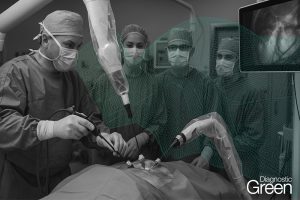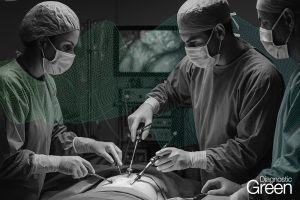Background: The deep inferior epigastric artery perforator (DIEP) flap is the gold standard for autologous breast reconstruction. However, the conventional procedure’s anterior sheath division, from perforating vessels to the pedicle origin, risks weakening the abdominal wall’s primary strength layer. Employing the da Vinci Xi Surgical System with indocyanine green dye and near-infrared fluorescence imaging, we refined a robotic technique for bilateral DIEP flap harvest. This approach enhances safety during vessel dissection, utilizing smaller fascial incisions. This study will present this technique in detail to microsurgeons interested in robotic DIEP flaps.
Methods: In a retrospective cohort study spanning July 2021 to September 2022, female patients undergoing robotic bilateral DIEP flap reconstruction were analyzed. Following suprafascial flap dissection, the surgical robot was docked to target the pelvis, identifying and exposing deep inferior epigastric vessels intracorporeally. Mobilization and division occurred at their bases, with retrieval through a minimal anterior fascial incision, minimizing disruption to the abdominal wall and its motor innervation.
Results: The study comprised 23 patients (46 flaps), with a mean fascial length of 4.1 cm and mean pedicle length of 12.82 cm. Mesh usage was absent. Robotic time averaged 139 minutes, overall case length was 739 minutes, and the average length of stay was 3.9 days. Notably, no pedicle or intra-abdominal injuries were reported.
Conclusion: This technique ensures safe and efficient pedicle dissection in robotic DIEP flap harvests. Given the limited number of plastic surgeons adept in minimally invasive abdominal surgeries, we recommend collaborative efforts, with general surgeons initially assisting microsurgeons in adopting the robotic approach. This strategy facilitates a smooth transition until plastic surgeons attain confidence and competence in independent robotic dissection.




